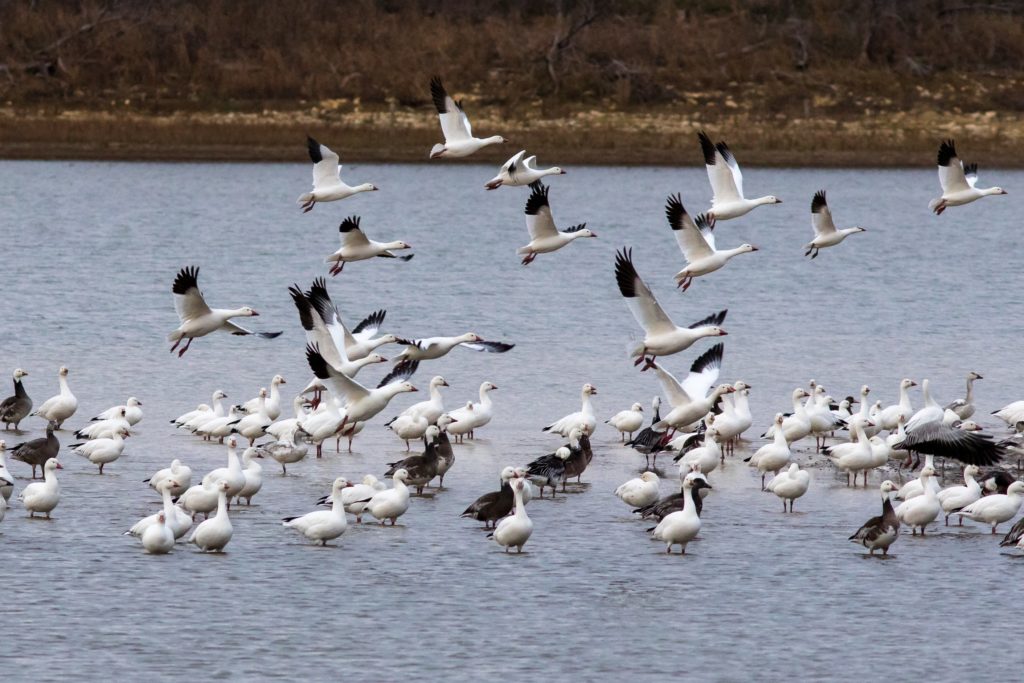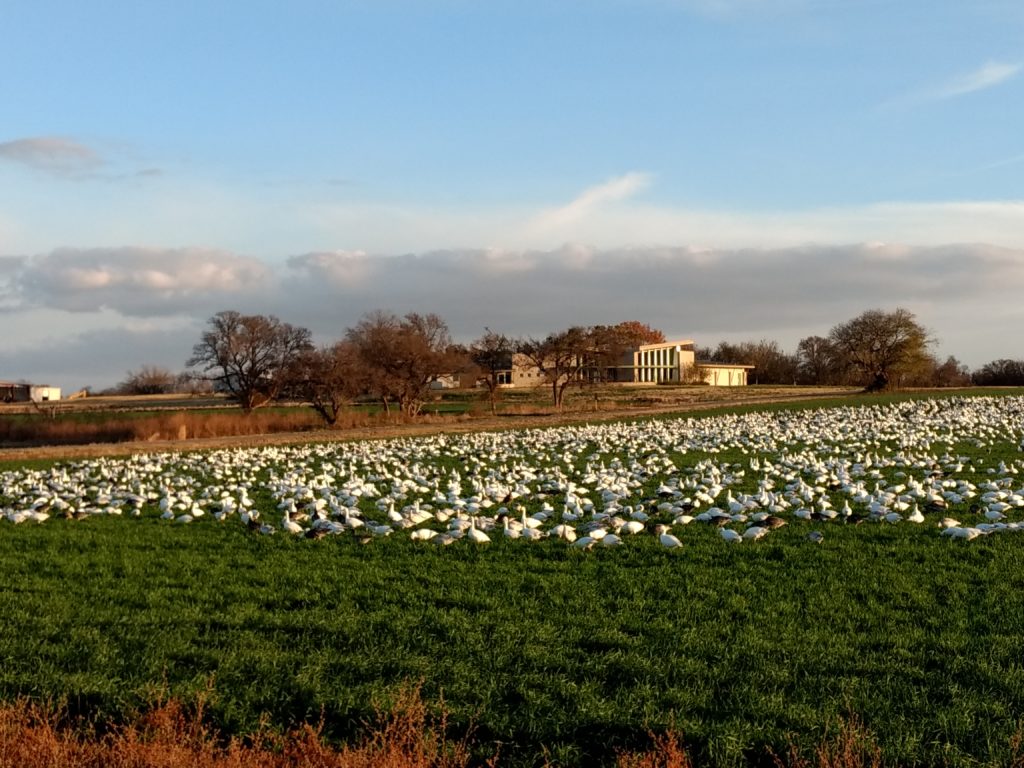By Laurie Sheppard

The year started out like any other, but 2020 had plenty of challenges in store. A variety of public-facing activities are conducted throughout the year at Hagerman National Wildlife Refuge, including Van or Tram Tours, guide bird walks, Second Saturday nature programs, a youth program called Refuge Rocks, an active photo club, and a nature journaling club. Each of those programs involve volunteers, and volunteers also provide manpower to maintain gardens, mow grass, staff school visits, conduct butterfly walks, monitor Bluebird nest boxes, and more. In January, all of the typical activities and programs were buzzing along and planning was underway for the spring and summer seasons at the refuge.
A new tram arrived in February and a contest was held to give it a name. The winner was “Wildlife Explorer”. Each volunteer driver was trained on the maintenance and operation of the tram; they all looked forward to weekend tours throughout the remainder of the year. The nest box monitoring team met to repair and refurbish nest boxes, 20 of which were “adopted” by supporters for the ninth year in a row. Over 1400 Eastern Bluebirds have fledged from the refuge’s monitored boxes since 2010. Butterfly Garden Docents met to prepare the schedule for garden walks and educational programs.

March snuck in with heavy spring rains putting refuge roads under water, but that was not the only blow to refuge programs. Covid-19 was covering the country like rain over the plains. The U.S. Fish and Wildlife Service (USFWS) regional leadership made the decision to close refuge Visitors Centers throughout the Southwest and curtail all activities and volunteerism, at least temporarily. Hagerman’s staff were directed to work from home until further notice. However, public access to all areas of the refuge remained open.
The restrictions at the refuge coincided with other limitations on recreational activities and school closures in the area. As soon as the flood water receded in early April, the refuge experienced a large influx of visitors, estimated at 16,000 vehicles in less than a month. Without onsite staff to provide regular cleaning, the refuge locked the rest rooms and added commercial portable facilities. After a few unfortunate incidents, signs were added at each end of Wildlife Road reminding visitors to remain on the roads, and speed bumps were installed on paved sections.

In the months that followed, organized public gatherings continued to be prohibited but some volunteer activities resumed, albeit with some changes. For example, because nest box monitoring is done using government vehicles, it was allowed only for same household partners. Mowing resumed with masks and precautions in place. Other limited volunteer activities were allowed only where social distancing was possible.
In July, Second Saturday and Photo Club programs resumed using Zoom technology, and remote meetings are likely to continue at least through spring 2021. The Friends of Hagerman’s monthly newsletter continues to provide information and status updates, and the USFWS has a limited maintenance staff keeping things in good repair. Wheat was planted on schedule to feed the hungry geese, but after a wet spring, summer was unusually dry and seeds were slow to germinate.
Geese, ducks, and other winter birds have arrived nonetheless, and despite the latest surge of Coronavirus, it is still possible to social distance while enjoying the wildlife. At Hagerman, we volunteers look forward to a time when we can reopen the Visitors Center and resume our tram tour and Butterfly Garden Docent schedule to share our passion for the refuge with the community. Hopefully, we will be able to gather for social events and volunteer activities in 2021.


